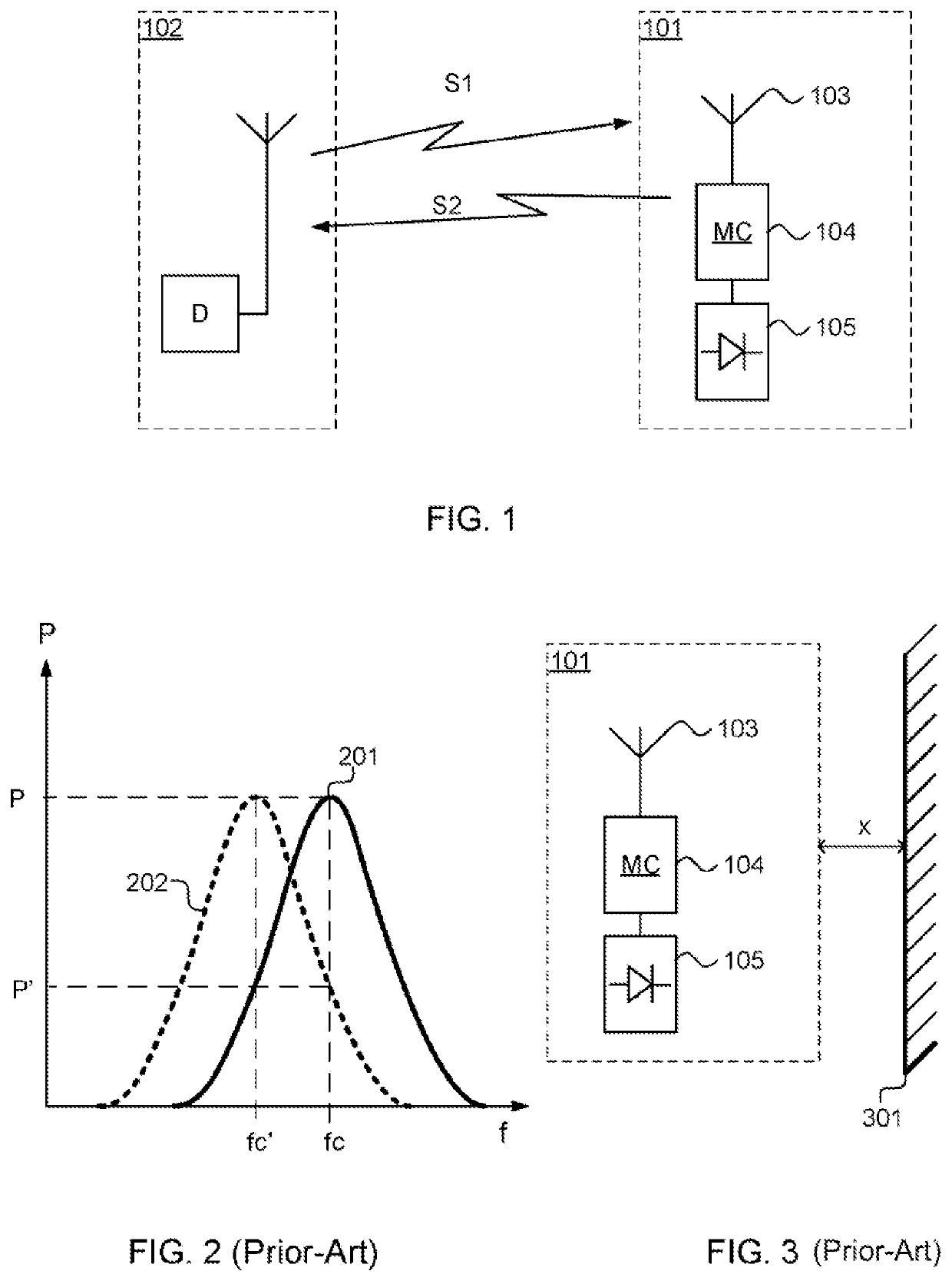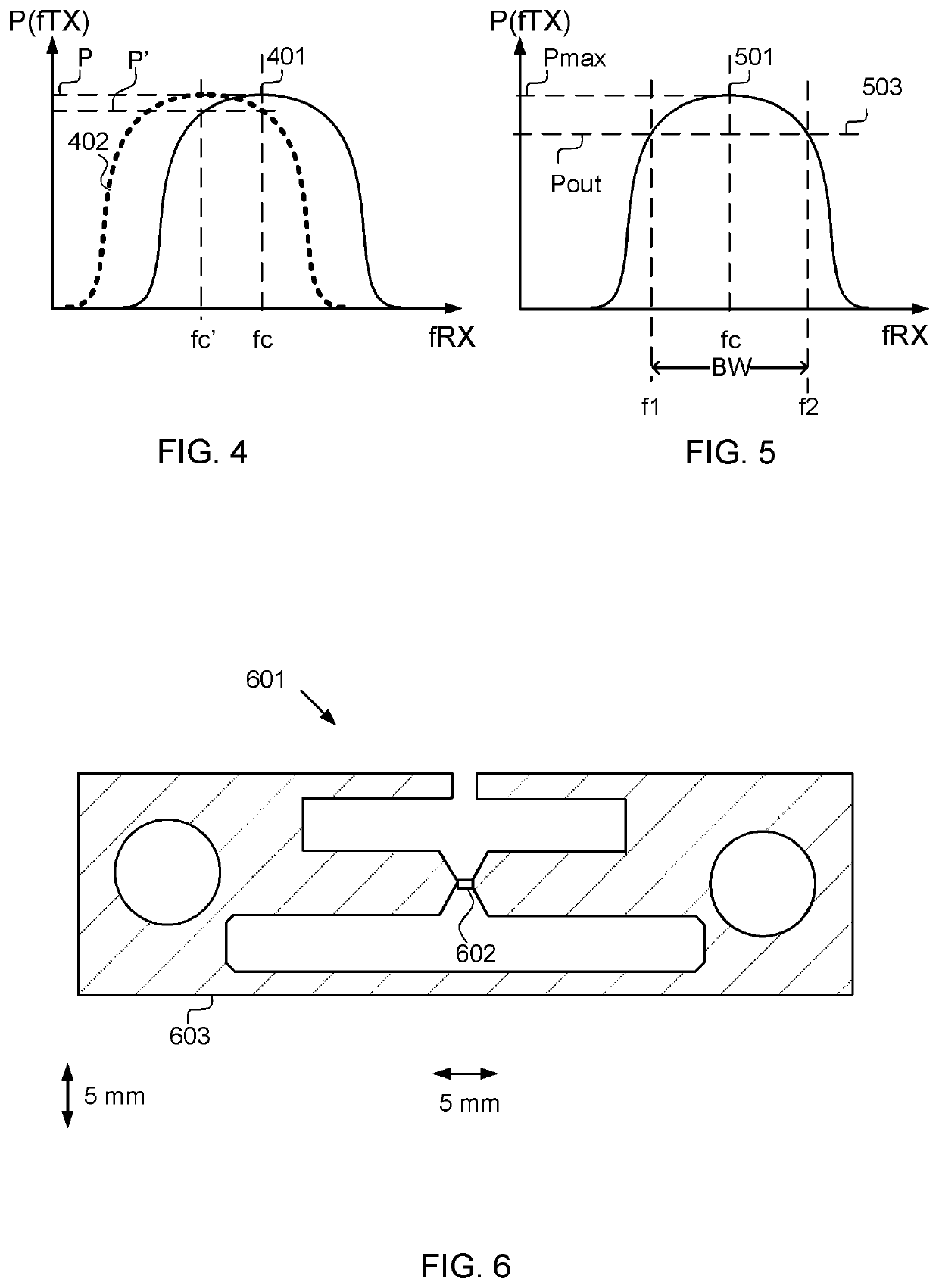Harmonic radar reflector
a radar reflector and harmonic technology, applied in the field of radar reflectors, can solve the problems of poor impedance match between the reflector antenna and the non-linear element, and the performance will be degraded
- Summary
- Abstract
- Description
- Claims
- Application Information
AI Technical Summary
Benefits of technology
Problems solved by technology
Method used
Image
Examples
Embodiment Construction
[0028]FIG. 1 shows a harmonic reflector circuit, generally designated 101, and a detector, generally designated 102.
[0029]The detector 102 transmits a signal S1 at a frequency fRX this signal S1 is received by the harmonic reflector circuit 101 and converted and transmitted as a second signal S2 at a frequency fTX by the harmonic reflector circuit 101. The harmonic reflector circuit 101 receives the incoming signal S1 by means of an antenna 103. The antenna 103 is connected to a matching circuit 104 which provides an impedance match between the antenna 103 and the non-linear circuit 105 for both the frequency fRX and the frequency fTX. The impedance matching is crucial for a conversion with low losses from the first signal S1 to the second signal S2, at their frequency fRX and fTX, respectively.
[0030]In FIG. 2 a typical response from the harmonic reflector 102 is disclosed. A first curve 201 shows the reflected power P from a signal transmitted at frequency fc, the bandwidth of the ...
PUM
 Login to View More
Login to View More Abstract
Description
Claims
Application Information
 Login to View More
Login to View More - R&D
- Intellectual Property
- Life Sciences
- Materials
- Tech Scout
- Unparalleled Data Quality
- Higher Quality Content
- 60% Fewer Hallucinations
Browse by: Latest US Patents, China's latest patents, Technical Efficacy Thesaurus, Application Domain, Technology Topic, Popular Technical Reports.
© 2025 PatSnap. All rights reserved.Legal|Privacy policy|Modern Slavery Act Transparency Statement|Sitemap|About US| Contact US: help@patsnap.com


